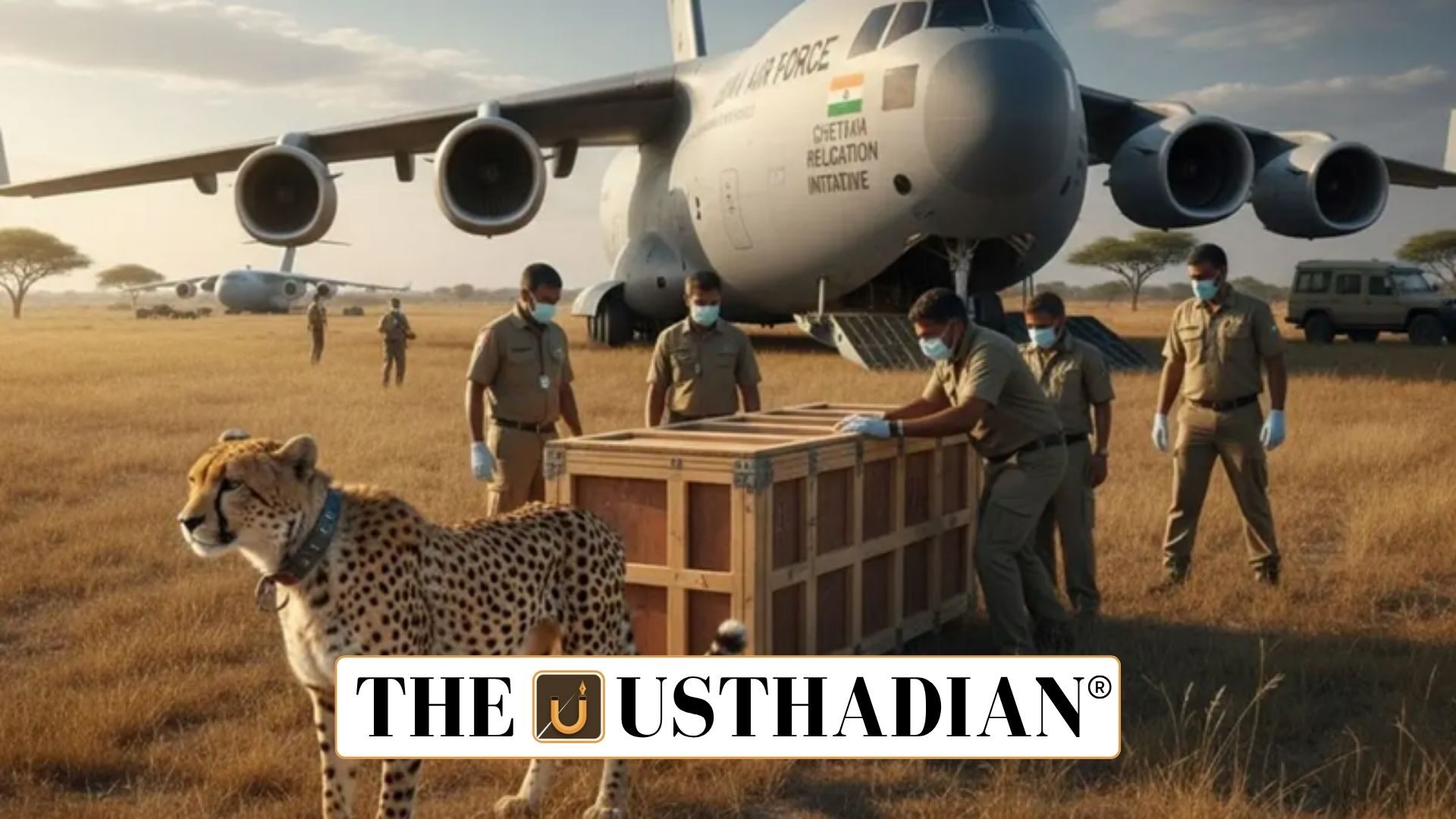Project Cheetah and Its Mission
India Welcomes Eight New Cheetahs from Botswana: India’s plan to import eight African cheetahs from Botswana by December 2025 marks the next phase of Project Cheetah, launched to restore a species declared extinct in 1952. The cheetahs are currently under quarantine in Botswana and will soon be relocated to Kuno National Park in Madhya Pradesh, where they will be monitored before their release.
Static GK fact: The cheetah was officially declared extinct in India in 1952, primarily due to excessive hunting and habitat loss.
World’s First Intercontinental Reintroduction
Project Cheetah is recognized as the world’s first intercontinental large carnivore translocation project, involving collaboration with African nations such as Namibia, South Africa, and Botswana. It aims to reintroduce the species into India’s grassland ecosystems and restore balance to the ecological food chain.
Since 2022, India has translocated 20 cheetahs—eight from Namibia and twelve from South Africa. The present count stands at 27 cheetahs, including 16 cubs born in India.
Static GK Tip: The project is jointly managed by the National Tiger Conservation Authority (NTCA) and the Wildlife Institute of India (WII).
Botswana Batch Arrival
The new batch from Botswana will arrive in two phases, enhancing genetic diversity within the Indian population. Upon arrival, they will undergo a 2–3 month quarantine before being gradually released into the wild.
Currently, Kuno National Park is the central site for reintroduction, but expansion to Gandhi Sagar Wildlife Sanctuary in Madhya Pradesh and Mukundra Hills Tiger Reserve in Rajasthan is under planning. This diversification aims to prevent overcrowding and increase survival rates.
Static GK fact: Kuno National Park was notified as a national park in 2018 and covers over 748 square kilometers.
Balancing Conservation and Challenges
Although hailed as a landmark conservation initiative, Project Cheetah faces significant scrutiny. Nine adult cheetahs and ten cubs have died due to adaptation challenges, extreme heat, and stress from relocation. Wildlife experts highlight issues like climatic mismatch between African and Indian environments and differences in prey availability.
Despite setbacks, the government remains optimistic. Officials emphasize that the birth of locally bred cubs and improving habitat management show long-term promise for sustainable population growth.
Static GK Tip: The cheetah is the fastest land animal, capable of reaching speeds up to 113 km/h.
Future Prospects
The next goal of Project Cheetah is to create self-sustaining cheetah populations across suitable Indian habitats. Focus areas include expanding grasslands, ensuring prey base development, and continuous scientific monitoring. If successful, the initiative could make India the first country to reintroduce a large carnivore species to its native range after extinction.
Static Usthadian Current Affairs Table
India Welcomes Eight New Cheetahs from Botswana:
| Topic | Detail |
| Project Name | Project Cheetah |
| Objective | Reintroduce cheetahs to India’s historical habitats |
| Cheetahs Extinct in India | 1952 |
| First Reintroduction | September 2022 |
| Total Population | 27 (including 16 Indian-born) |
| New Batch | 8 cheetahs from Botswana (arriving December 2025) |
| Key Sites | Kuno National Park, Gandhi Sagar, Mukundra Hills |
| Managing Bodies | NTCA and Wildlife Institute of India |
| Partner Countries | Namibia, South Africa, Botswana |
| Project Type | First intercontinental large carnivore translocation initiative |








